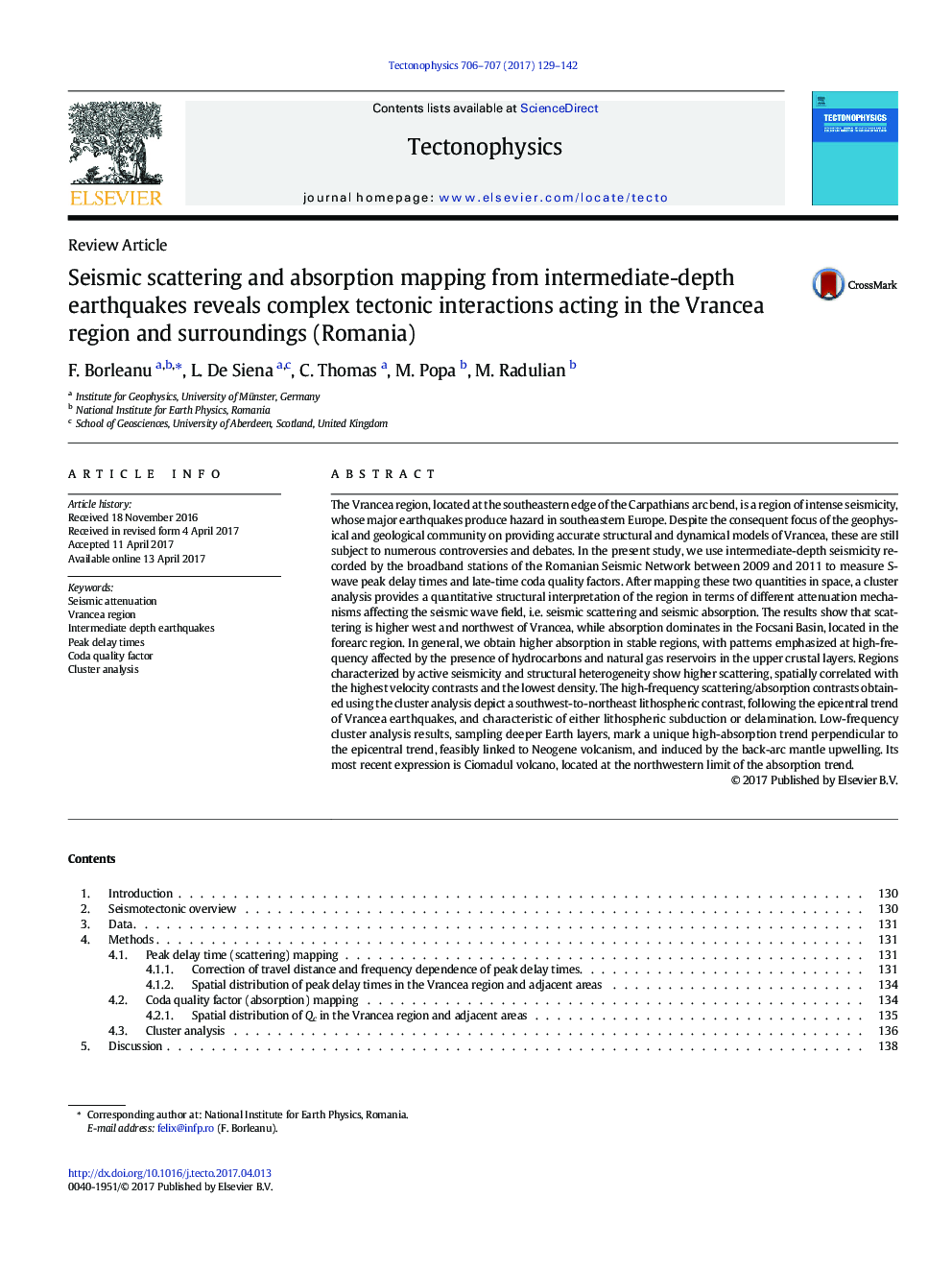| کد مقاله | کد نشریه | سال انتشار | مقاله انگلیسی | نسخه تمام متن |
|---|---|---|---|---|
| 5781510 | 1636698 | 2017 | 14 صفحه PDF | دانلود رایگان |
عنوان انگلیسی مقاله ISI
Seismic scattering and absorption mapping from intermediate-depth earthquakes reveals complex tectonic interactions acting in the Vrancea region and surroundings (Romania)
ترجمه فارسی عنوان
پراکندگی لرزه ای و نقشه برداری جذب از زمین لرزه های عمق عمودی نشان می دهد که متقابل تکتونیکی پیچیده در منطقه ونیا و محیط اطراف (رومانی)
دانلود مقاله + سفارش ترجمه
دانلود مقاله ISI انگلیسی
رایگان برای ایرانیان
کلمات کلیدی
آسیب لرزه ای، منطقه ونیا، زمین لرزه عمق متوسط، زمان تأخیر عامل کیفیت کدو، آنالیز خوشه ای،
موضوعات مرتبط
مهندسی و علوم پایه
علوم زمین و سیارات
فرآیندهای سطح زمین
چکیده انگلیسی
The Vrancea region, located at the southeastern edge of the Carpathians arc bend, is a region of intense seismicity, whose major earthquakes produce hazard in southeastern Europe. Despite the consequent focus of the geophysical and geological community on providing accurate structural and dynamical models of Vrancea, these are still subject to numerous controversies and debates. In the present study, we use intermediate-depth seismicity recorded by the broadband stations of the Romanian Seismic Network between 2009 and 2011 to measure S-wave peak delay times and late-time coda quality factors. After mapping these two quantities in space, a cluster analysis provides a quantitative structural interpretation of the region in terms of different attenuation mechanisms affecting the seismic wave field, i.e. seismic scattering and seismic absorption. The results show that scattering is higher west and northwest of Vrancea, while absorption dominates in the Focsani Basin, located in the forearc region. In general, we obtain higher absorption in stable regions, with patterns emphasized at high-frequency affected by the presence of hydrocarbons and natural gas reservoirs in the upper crustal layers. Regions characterized by active seismicity and structural heterogeneity show higher scattering, spatially correlated with the highest velocity contrasts and the lowest density. The high-frequency scattering/absorption contrasts obtained using the cluster analysis depict a southwest-to-northeast lithospheric contrast, following the epicentral trend of Vrancea earthquakes, and characteristic of either lithospheric subduction or delamination. Low-frequency cluster analysis results, sampling deeper Earth layers, mark a unique high-absorption trend perpendicular to the epicentral trend, feasibly linked to Neogene volcanism, and induced by the back-arc mantle upwelling. Its most recent expression is Ciomadul volcano, located at the northwestern limit of the absorption trend.
ناشر
Database: Elsevier - ScienceDirect (ساینس دایرکت)
Journal: Tectonophysics - Volumes 706â707, 5 June 2017, Pages 129-142
Journal: Tectonophysics - Volumes 706â707, 5 June 2017, Pages 129-142
نویسندگان
F. Borleanu, L. De Siena, C. Thomas, M. Popa, M. Radulian,
